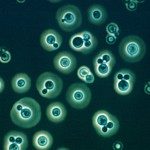About
During the last decade, advances in the sequencing technologies have revealed a large set of new eukaryotic RNA molecules. For instance, whereas 75% of the human genome was recently reported to be transcribed only 2% of it is translated in proteins. Thus, in addition to the well-studied small RNA molecules implicated in some basic processes of cell biology like translation (tRNAs and rRNAs) or mRNA maturation (Sn, sca, SnoRNAs…), thousands of lncRNAs have been identified in metazoans. In fungi, most of the knowledge is coming from studies done on Saccharomyces cerevisiae in which hundreds of ncRNAs have been described and named (CUTs, XUTs, SUTs, MUTs) according to the pathway by which they are degraded or, the loci or the physiological state at which they are transcribed. Most of them can be revealed or, up-regulated by mutations in some RNA degradation pathways or by altering the chromatin structure. Accordingly, most of these ncRNAs are unstable. Nevertheless, a trans or cis-regulatory function has been identified for few of them. In human fungal pathogens nearly nothing is known although, as suggested by our analysis in C. neoformans and some preliminary analyses we have performed in Aspergillus fumigatus, a large number of them are to be present. This project aims to identify and characterise the lncRNAs in C. neoformans and to decipher the mechanisms regulating their expression.

